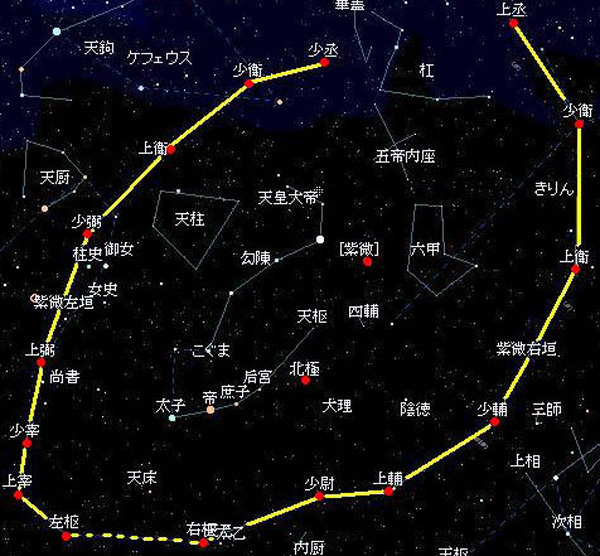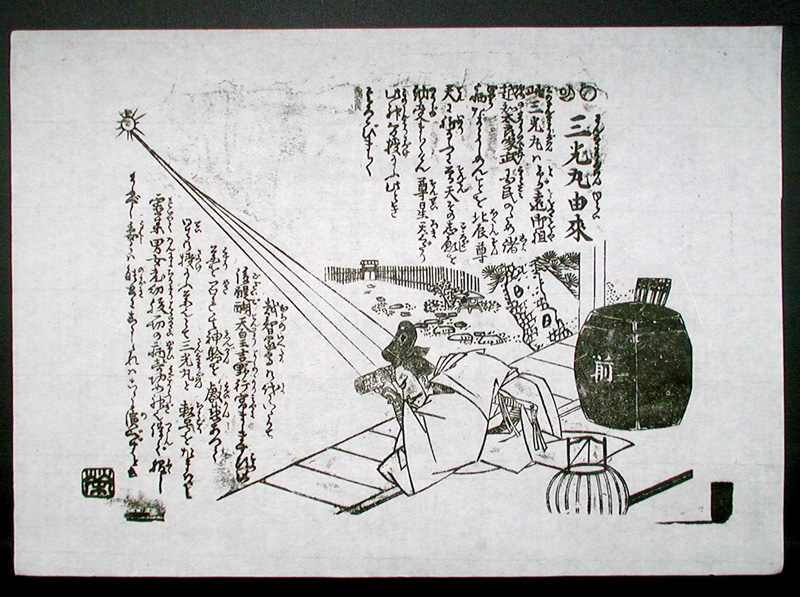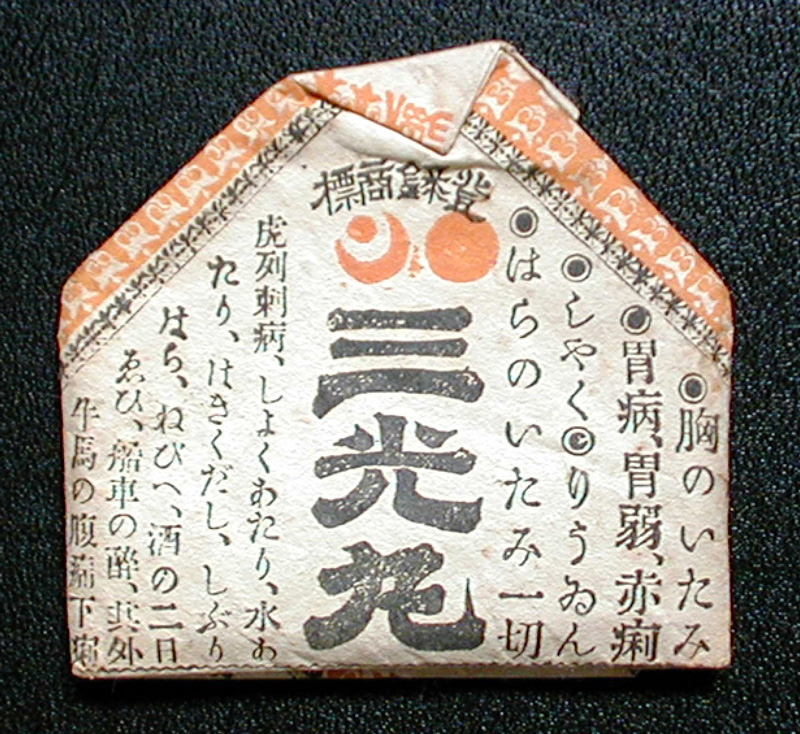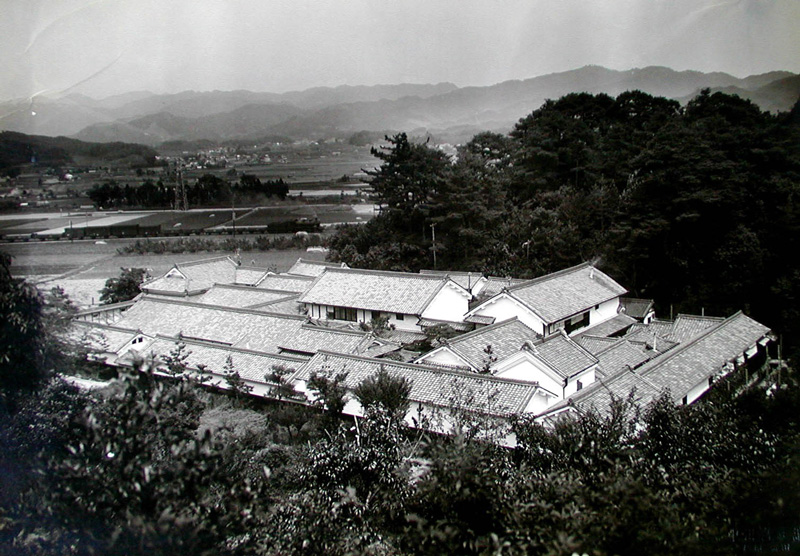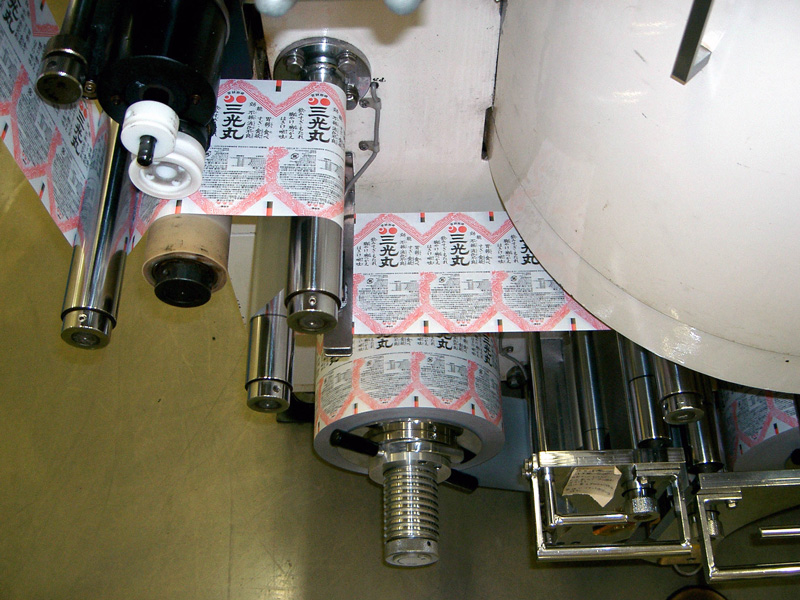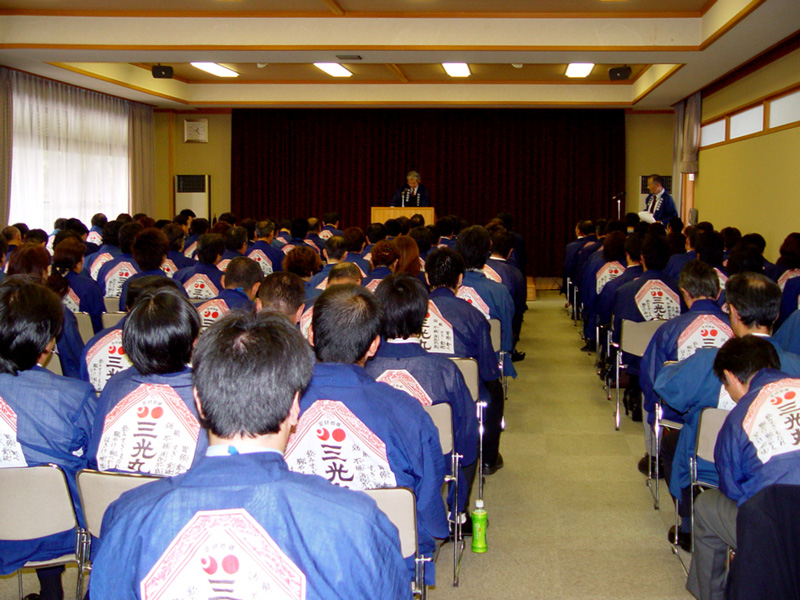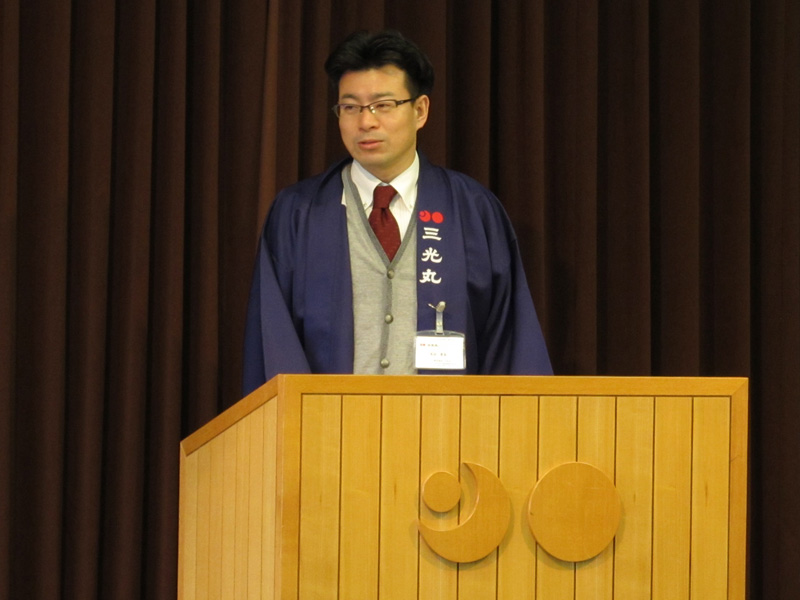- 1319 to 1321
- 1336
- 1550 onword
- 1573 to 1592
- 1673
- 1772
- 1818 to 1829
- 1866
- 1897
- 1899
- 1904
- 1914
- 1947
- 1957
- 1965
- 1985
- 1992
- 1999
- 2006
- 2012
- 2014
-
1319 to 1321
A drug called “Shibiengan” (later Sankogan) was first produced.
-

1336
The 96th Emperor Godaigo gave the name “Sankogan” to Shibiengan, and thus the drug had a new name.
-

1550 onword
Yamashina Tokitsugu, a court noble in Kyoto, repeatedly mentioned Sankogan in his diary.
-
1573 to 1592
Komeda Kojuro presented Sankogan to Oda Nobutada, the heir to Oda Nobunaga, and received recognition that the drug should be the “most important drug” in his force.
-

1673
The ancestor of the Komeda family stored and sold Sankogan at an inn on the Koya-kaido Road.
-

1772
Komeda Bunnai expanded the household distribution*1 of Sankogan from the Yamato district to Ise and Kawachi.
-

1818 to 1829
Sankogan, distributed by vendors in the Kansai region, formed the basis for drug selling in Yamato.
-

1866
Komeda Josuke took the initiative to conclude a gentlemen’s agreement called “Nakama Torishimari Gijosho Ren'incho” to achieve the co-existence and co-prosperity of drug sellers from Toyama and their counterparts in Yamato.
-

1897
The Sankodansha association was established to develop new customers across Japan.
-

1899
The Sankogan Domeikai union was established.
-
1904
The manufacturing of Sankogan was switched from the traditional manual production to a process using an oil-fired engine, thereby substantially increasing the drug output.
-
1914
A pentagonal drug-wrapping sheet was registered as a utility model.
-
1947
The business was incorporated into Sankogan Honten Co., Ltd.
-
1957
An automatic packing machine was introduced, realizing improved productivity and quality.
-

1965
Komeda Tokushichiro Shunsuke, the present senior advisor, became the 33rd head of the business.
-
1985
Sankogan Household Distribution Training Co., Ltd., was established as a development organization for household distributors.
-

1992
A processing plant was completed for the extraction and production of Japanese green gentian (Swertia japonica), thereby initiating full processing of raw material within the company.
-

1999
The Sankogan Museum of Pharmacy was established. A ceremony was held to commemorate the 100th anniversary of the union.
-

2006
The Sankogan packaging was renewed to further enhance quality. New filling and packaging lines started operation.
-

2012
Sankogan Household Distribution Training Co., Ltd. was merged for capital enhancement, and the new corporation was named Sankogan Co., Ltd.
-
2014
Komeda Toyotaka became the 34th head of the business.
Foundation (from 1319)
![By known [Public domain], via Wikimedia Commons Emperor Godaigo](https://upload.wikimedia.org/wikipedia/commons/thumb/5/59/Emperor_Godaigo.jpg/512px-Emperor_Godaigo.jpg)
The history of Sankogan can be traced back for approximately 700 years, back to the late Kamakura period. In the Yamatonokuni region in those days, the Ochi clan spread its influence across southern Yamato, and had become one of the most important powerful families in Yamato. The Komeda family was a branch family and related to the Ochi clan, and functioned as brains for the Ochi force. They were particularly specialized in medicine and pharmaceuticals, and prescribed various drugs and distributed them to members of the clan.
In the Nambokucho period (from 1336), powerful families in Yamatonokuni were divided into the supporters of Hokucho (the northern dynasty) in Kyoto and those who supported Nancho (the southern dynasty) in Yoshino, and they battled with each other. The Ochi clan fought for Nancho, which was led by the Emperor Godaigo, and one day presented to the Emperor Shibiengan, the secret drug that was inherited within the clan.
The Emperor was amazed at its excellent effect, praised it as an "elixir gifted by the gods of the sky, of the moon, and of the stars", and honored the drug with the name "Sankogan".
From the Muromachi to the Sengoku and to the Edo period
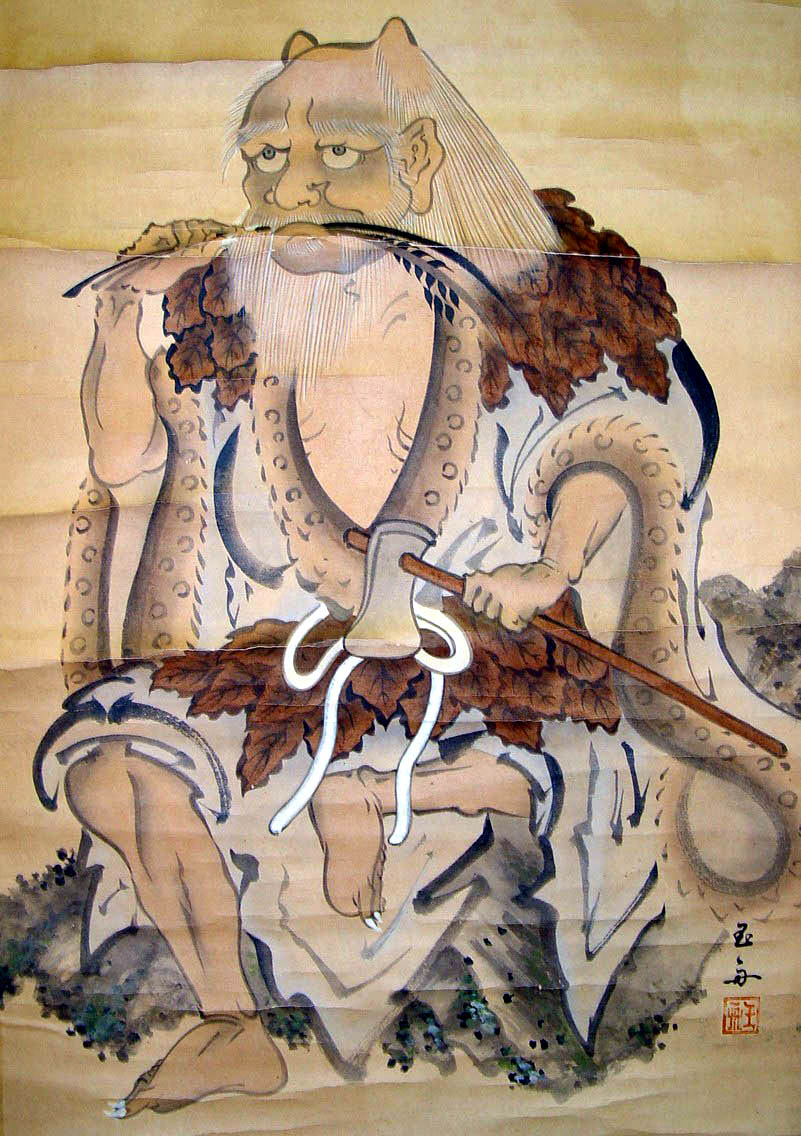
The Ochi clan was gradually weakened in subsequent years, and died out at the end of the Sengoku period. After that, most of the important vassals of the Ochi clan stayed in their home region. The Komeda family was also involved in farming, while handing over the production methods for their inherited drugs including Sankogan.
The practice of household distribution of drugs called *1 "Okigusuri" in Yamato was started in the mid-Edo period or later. The Komeda family created an opportunity for this practice based on their knowledge of manufacturing methods for drugs and how to handle herbal medicines.
The business model of Okigusuri was initiated almost simultaneously in Etchunokuni Toyama and in Yamatonokuni. The Etchu household distributors were more prosperous at first, with backup from their feudal lord. However, by the end of the Edo period, the two sales forces were competing everywhere across Japan.
It was Komeda Josuke, the then head of Sankogan, who took action based on concern that the household distribution forces from Toyama and from Yamato might both fall if the situation was left as it was. In 1866, at the end of the Edo period, Josuke organized an opportunity for negotiation between household distributors from Yamato and Toyama, which led to the conclusion of the gentlemen’s agreement called "Nakama Torishimari Gijosho Ren'incho".
*1 A drug selling system unique to Japan, called "Haichi Hambai", where the sellers of drugs visit households, deposit drugs with each family, and revisit them again every six months or every year to collect payment for drugs used. This business model is called "Senyo Kori (providing products in advance, and collecting payments later)", and is beneficial to customers in that they can use necessary drugs at any time, that no payment becomes necessary unless they use drugs, that they need not go and buy drugs, and that the storage of drugs at hand provides them with reassurance.
Okigusuri (literally "deposited drugs") became popular particularly in farming and fishing villages where doctors and hospitals were scarce and income was unstable, and has maintained broad and permanent popularity from the Edo period through to the present day.
From the Meiji to the Taisho and to the Showa Era
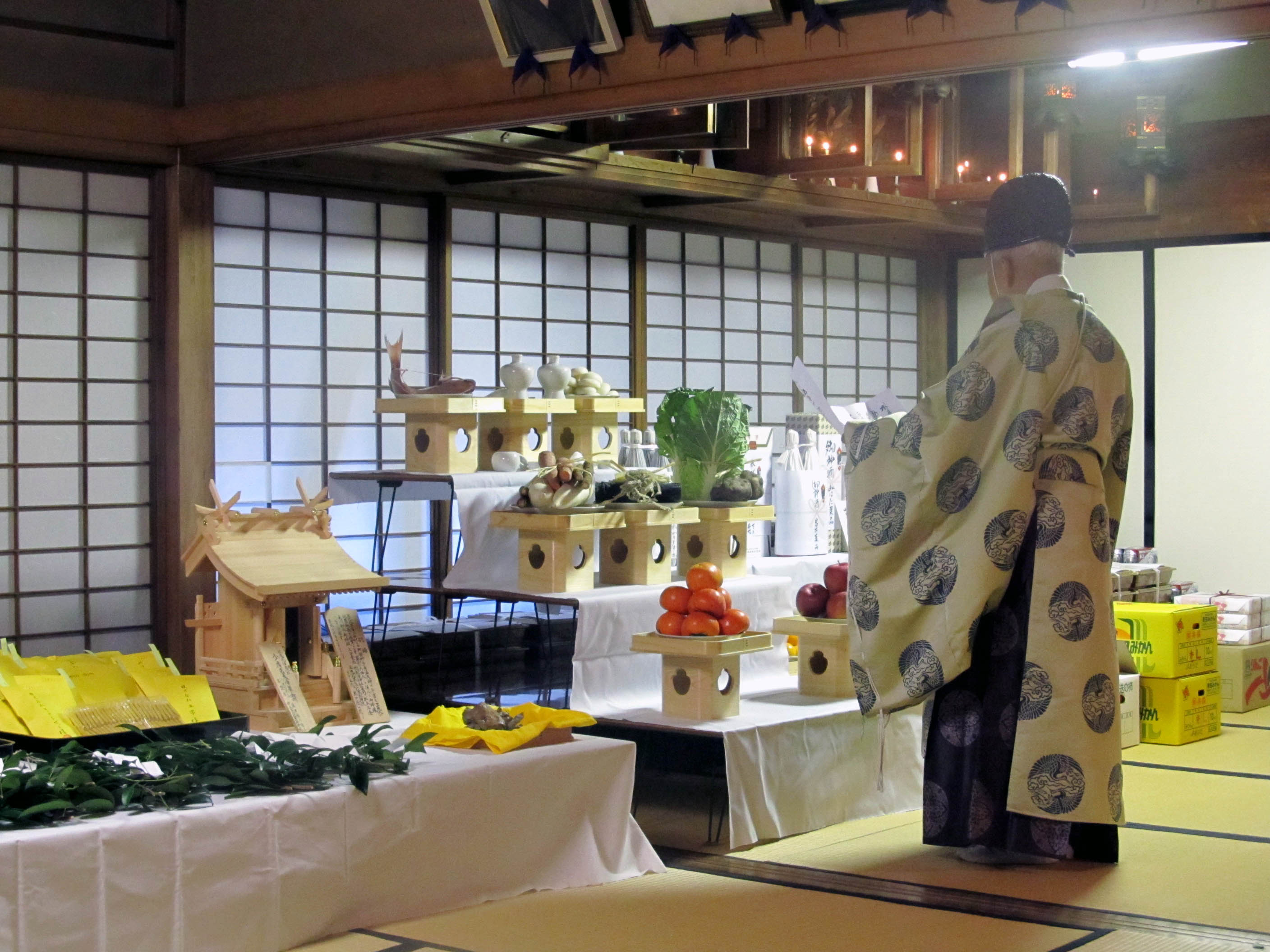
After the household distribution industry in Yamato thus survived the turmoil at the end of the Edo period, it was faced with a new trial after the Meiji government was established.
As the new government sought to proactively introduce Western products, it assumed that Japanese folk medicines and household distribution drugs lacked scientific evidence, unlike Western drugs, and that therefore no actual effect could be expected, and it took an extremely stringent policy against household distribution drugs, including imposing unreasonable tax. It was the Komeda family again that helped out in this crisis. Komeda Tokushichiro Torayoshi, the then head of Sankogan, integrated the confused household distribution industry in Yamato, and established breakthrough policies one after another.
The next difficulty came after World War II broke out. As the battle became increasingly fierce, the government of Japan reorganized companies for the purpose of sustaining war. Household distributors of drugs in Nara Prefecture were also forced to merge and integrate by geographical area. The company name of Sankogan was temporarily lost at this time. The death in the war of Komeda Tokushichiro Keizo, the then head of Sankogan, added to the difficulty experienced by the company.
After the war was ended, the reorganization of companies was repealed, and Sankogan started anew as Sankogan Honten Co., Ltd. While the loss of the then head placed a large burden on the company, Komeda Tokushichiro Shunsuke succeeded to the position, and restored the company with cooperation from its employees and its partner distributors Haichi Hambai, thus achieving further growth.
Present time
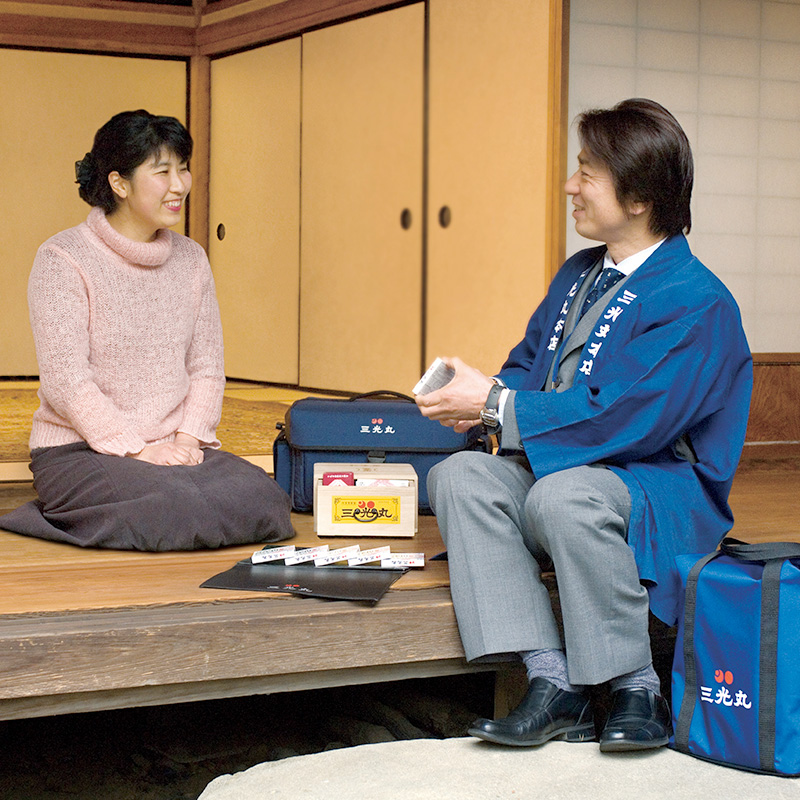
At present, approximately 250 Haichi Hambai distributors deal with Sankogan. The company also has twelve sales offices across Japan, and has established a sales network for the Sankogan drug covering the entire archipelago from Hokkaido in the north to Okinawa in the south.
We at Sankogan Co., Ltd. believe that our mission is to deliver health and reassurance to people through Sankogan, an oriental digestive drug, while contributing to the development of local education and culture through our museum activities.

